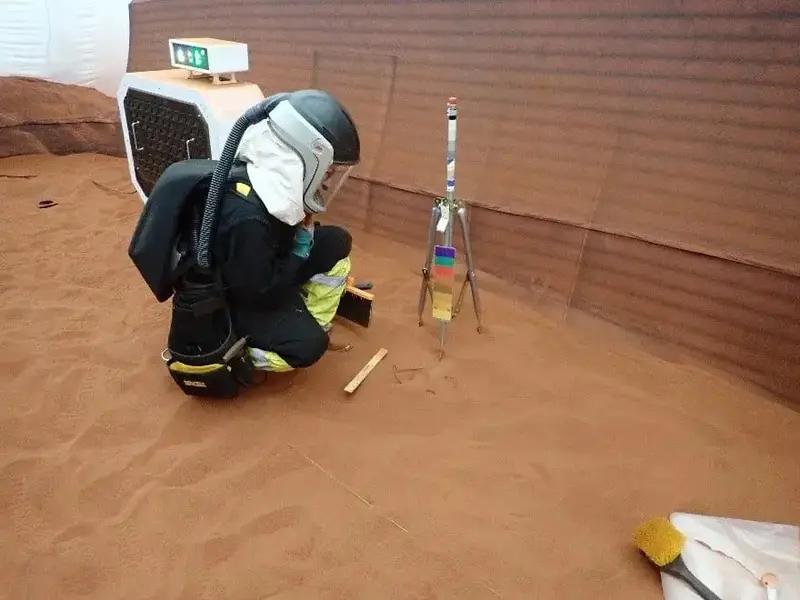The National Aeronautics and Space Administration (NASA) is inviting four volunteers to live in simulated conditions of Mars for a year. the colonization of which was recently imagined by the neural network Midjourney.
The quartet will be set up in a 3D-printed model of the environment of the Red Planet – Mars Dune Alpha, which covers an area of 158 square meters. The model is located at the Johnson Space Center in Houston, Texas.
Volunteers will participate in the second of three missions of the Crew Health and Performance Exploration Analog (CHAPEA) experiment. Over the course of 12 months, project participants will face “resource constraints, equipment failures, communication delays, and other stressors,” NASA warned.
What the team will do on imaginary Mars. ?
The members of the CHAPEA team will immerse themselves in the role of true Martian inhabitants. They will face a struggle for survival in the harsh, barren landscape of the planet. They will simulate spacewalks in virtual reality, perform scheduled maintenance on the Mars Dune Alpha structure, and oversee robotic operations.
Participants in the experiment will also grow crops for their own food and maintain their fitness through training, it reports. Popular Science Team members will regularly provide experts with information about their health and work capacity.

What are the requirements for candidates?
NASA’s requirements for candidates are quite strict. Anyone wishing to experience being a researcher on the Red Planet for at least a year must be a U.S. citizen aged between 30 and 55. The applicant must have excellent health, must not smoke, and must not have a criminal record. To qualify, a future crew member needs a master’s degree and two years of work experience in a STEM field (science, technology, engineering, or mathematics). Having at least 1,000 hours of piloting experience and military experience will be additional advantages for potential team members. Science Alert .
Candidates will also fill out a lengthy questionnaire with tricky questions. These will specifically relate to diet, gut health, claustrophobia, and experiences of isolation.
A mission like CHAPEA is vital for the future. plans of humans to explore Mars and the Moon exploration program “Artemis.”
The first of three planned CHAPEA missions began on June 25, 2023. It is currently at its equator. Four crew members have successfully completed their tasks, particularly those related to growing agricultural crops.
NASA will accept applications for participation in the next experiment until April 2, 2024.
